WHO/Oman Medical Specialty Board to build capacity in medical education
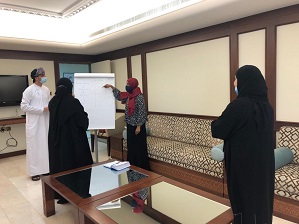 31 March 2021 – On 16 March 2021, the WHO country office in Oman invited representatives Dr Badar Al-Alawi and Ms Mona Al-Battashi from the Oman Medical Specialty Board to discuss inititiation of a collaborative project related to online courses that had been agreed between WHO and the Board in February 2021.
31 March 2021 – On 16 March 2021, the WHO country office in Oman invited representatives Dr Badar Al-Alawi and Ms Mona Al-Battashi from the Oman Medical Specialty Board to discuss inititiation of a collaborative project related to online courses that had been agreed between WHO and the Board in February 2021.
The discussion, led by Dr Lamia Mahmoud and Dr Kamila Al-Alawi from the WHO country office, focused on the various stages of course design, how to elicit engagement of relevant national and international experts and who from WHO and the Oman Medical Specialty Board should be involved in the development of courses.
The Oman Medical Specialty Boards specified that courses should cover 4 categories of participants – Board trainees, trainers and faculty and health care workers. The WHO country office expressed full support for the project that would not only benefit Oman but the Region as a whole.
Syria to get first deliveries of COVAX vaccines within weeks: WHO official
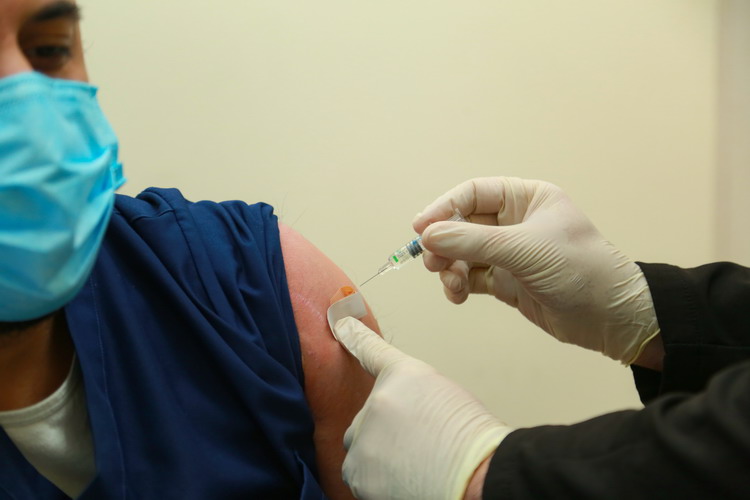
AMMAN (Reuters) – Syria will take delivery within weeks of its first COVID-19 vaccines from the global vaccine sharing platform COVAX, allowing it to kick off its national inoculation programme as early as next month, the U.N. health agency’s country head said on Wednesday.
The first shipments are from a consignment of one million doses of AstraZeneca Serum Institute India (AZSII) vaccines, Akjemal Magtymova, head of the World Health Organisation’s Syria mission told Reuters from Damascus in a phone interview.
MERS updates
Nous méritons tous de célébrer l’Aïd el-Fitr en toute sécurité cette année
- Limitez les rassemblements sociaux
- Maintenez une distance physique
- Portez un masque
- Lavez-vous les mains
- Faites-vous vacciner
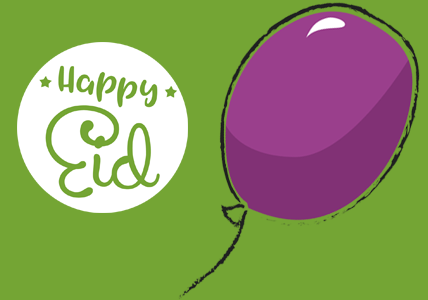
Protégez-vous et protégez les autres pendant les prières de l'Aïd el-Fitr
- Utilisez votre propre tapis de prière et maintenez une distanciation physique
- Portez votre masque
- Choisissez de prier à la maison avec des membres de votre famille proche uniquement
- Souvenez-vous des personnes malades dans vos prières cette année

Alors que nous fêtons l'Aïd el-Fitr cette année, célébrons également la bonne santé. Jouez votre rôle pour sauver des vies
- Annulez les grands rassemblements
- Utilisez des lieux extérieurs ou assurez une bonne ventilation à l'intérieur tout en veillant à la distanciation physique
- N’oubliez pas que les rassemblements virtuels sont plus sûrs

Vous pouvez être malade sans toutefois présenter de symptômes, ce qui met les autres en danger
- Portez toujours votre masque
- Évitez d'assister aux prières et aux rassemblements de l'Aïd el-Fitr si vous ne vous sentez pas bien
- Encouragez les amis et les membres de la famille âgés de plus de 60 ans ou souffrant d’autres problèmes de santé à rester à la maison
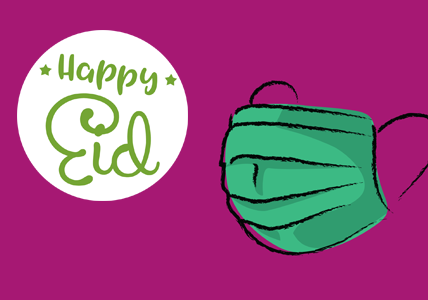
La vaccination est un outil essentiel pour aider à prévenir la propagation de la COVID-19
- Rappelons que le vaccin est autorisé par la Charia
- Prenez le vaccin contre la COVID-19 lorsqu’il est proposé
- Même après avoir été vacciné(e), portez un masque et pratiquez la distanciation physique pour protéger les autres

RD reports
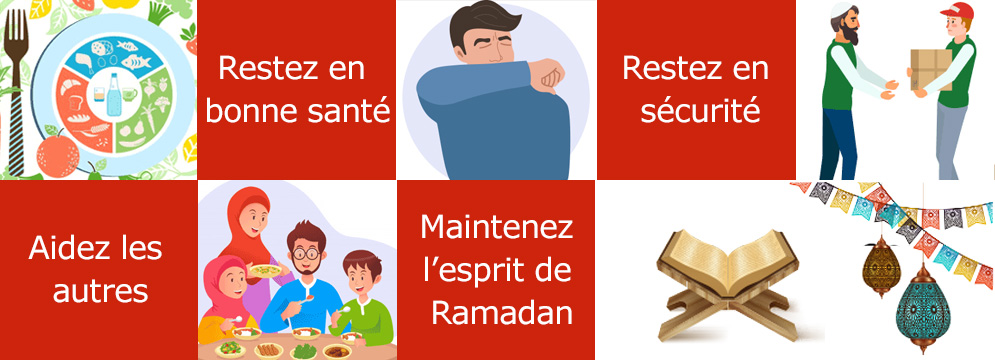
Restez en bonne santé pendant ce Ramadan
ul class="indent">- Maintenez une alimentation saine et buvez beaucoup d'eau.
- Évitez de fumer, de consommer des aliments malsains et à forte teneur en sucre.
- Suivez les mesures de sécurité sanitaire des aliments.
- Restez actif/-ve et dormez bien.
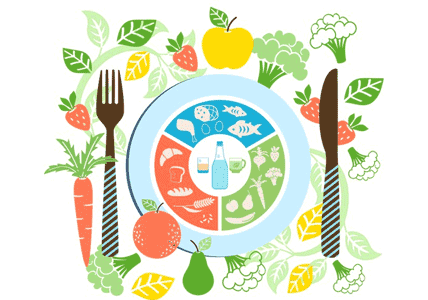
Restez en sécurité pendant ce Ramadan
- Lavez vos mains régulièrement et soigneusement.
- Portez votre masque.
- Maintenez une distance physique.
- Respectez les bonnes règles d’hygiène pour éternuer et tousser.
- Évitez les grands rassemblements et événements, en particulier si vous faites partie de groupes à haut risque ou si vous vous sentez mal.
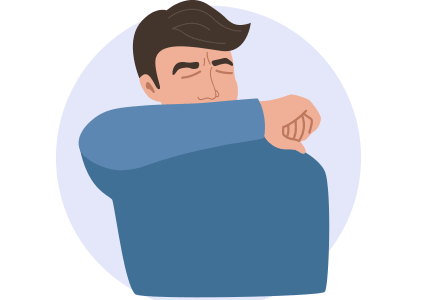
Gardez vivant l'esprit du Ramadan pendant la COVID-19
- Réfléchissez, améliorez, priez, partagez et faites preuve de sollicitude – le tout à distance.
- Proposez des prières spéciales pour les malades, ainsi que des messages d'espoir et de réconfort.
- Veillez à ce que la famille, les amis et les aînés restent engagés malgré la distance physique.
- Prenez virtuellement des nouvelles de vos proches par téléphone ou par vidéo.
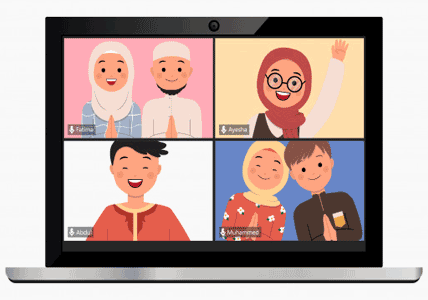
Trouvez de nouvelles façons d'aider les autres pendant ce Ramadan
- Évitez les « Tables de charité » bondées et envisagez de distribuer des boîtes ou des portions individuelles de nourriture préemballée.
- Utilisez la technologie numérique pour organiser la sadaqat ou la zakah.
- L’Académie internationale du Fiqh islamique a décidé que l’argent provenant de la zakat pourrait être utilisé pour l’achat et le déploiement des vaccins contre la COVID-19.

Rien n’indique que le fait de jeûner peut augmenter le risque d’infection par le virus de la COVID-19
- Les personnes en bonne santé devraient être capables de jeûner.
- Les patients atteints de COVID-19 ou ceux qui présentent des symptômes post-infection peuvent envisager d’obtenir une autorisation religieuse pour rompre le jeûne en consultation avec leur médecin.
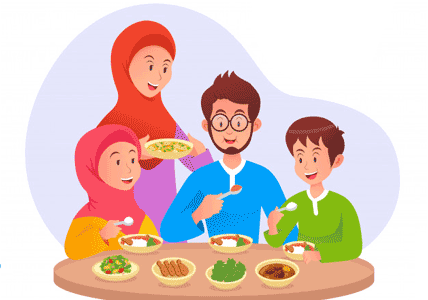
Si vous organisez un sohour, un iftar ou d'autres événements sociaux pendant ce Ramadan
- Envisagez d'organiser des rencontres virtuelles et limitez la participation physique aux personnes avec lesquelles vous vivez déjà.
- Organisez des événements plus petits avec moins de participants plutôt que de grands rassemblements.
- Assurez une bonne ventilation à l'intérieur ou choisissez des sites extérieurs.
- Envisagez des mesures pour faciliter la recherche des contacts dans le cas où une personne malade serait identifiée parmi les participants.

Encourager des pratiques saines dans les mosquées et les lieux de culte
- Faites le wudu à la maison lorsque cela est possible et utilisez des tapis de prière personnels.
- Veillez à ce que les installations de lavage soient équipées de savon et d'eau.
- Fournissez une solution hydroalcoolique (au moins 80 % d'éthanol ou 75 % d'alcool isopropylique) à l’entrée et à l’intérieur des mosquées.
- Régulez le flux des personnes entrant, fréquentant et sortant des mosquées ou d'autres lieux.
- Veillez à la disponibilité de mouchoirs à usage unique et de poubelles avec sacs jetables.
- Assurez le nettoyage fréquent des espaces de culte et des bâtiments.
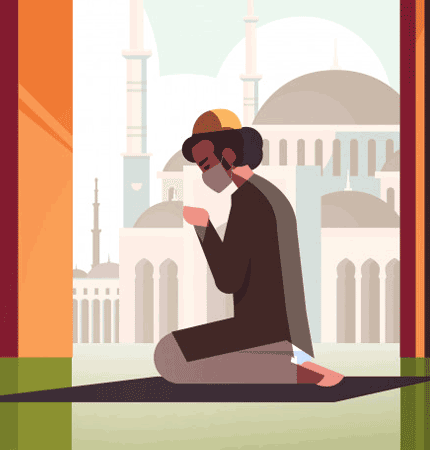
Dans les contextes où des restrictions de mouvement sont en place, les incidents de violence domestique, en particulier à l'encontre des femmes, des enfants et des personnes marginalisées, sont susceptibles d'augmenter
- Les chefs religieux peuvent s’élever activement contre la violence et apporter leur soutien ou encourager les victimes à demander de l’aide.

Si l’on vous propose le vaccin contre la COVID-19 pendant la période de Ramadan, sachez que :
- d'importants établissements de fatwa, comme Al Azhar Al Sharif, ont jugé que la prise du vaccin n'invaliderait pas le jeûne parce qu'il est administré par injection et non par un orifice naturel tel que la bouche ou le nez.
- D’importants établissements de fatwa tels que l’Académie internationale du Fiqh islamique ont déclaré que les vaccins contre la COVID-19 sont autorisés en vertu de la loi de la charia.
- Même si vous avez déjà été vacciné(e), continuez à prendre des mesures sociales et des mesures de santé publique pour protéger les autres d'une éventuelle transmission.
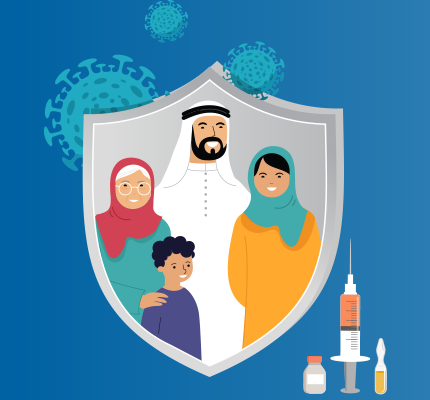
Si un pays propose à sa population le vaccin contre la COVID-19 pendant le Ramadan
- La collaboration avec les chefs religieux locaux est encouragée pour promouvoir l’acceptation du vaccin et poursuivre les campagnes de vaccination sans interruption.
- Informer le public que d'éminents établissements de fatwa tels que l’Académie internationale du Fiqh islamique ont déclaré que les vaccins contre la COVID-19 sont autorisés en vertu de la loi de la charia, et que d’autres établissements tels qu’Al Azhar Al Sharif ont stipulé que la vaccination n'invalidera pas le jeûne.
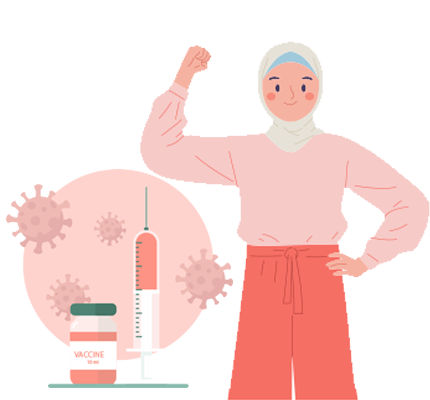
Ramadan messages from the Region
Related link
Eat healthy and be active in Ramadan


